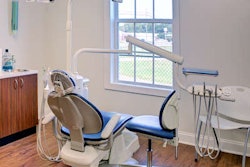
By August 2020, privately insured patients were visiting the dentist at about the same rate as before the COVID-19 pandemic, according to a study in the Journal of the American Dental Association. But dental utilization still lagged by 7.5% for patients with public insurance.
The researchers looked at deidentified data from thousands of practices in the U.S., which revealed that the postpandemic recovery was particularly hard for groups with historically low dental care utilization. It was one of the first analyses to focus on more granular procedure-level data to study the effect of COVID-19 on different types of dental practices, according to the authors, led by Sung Eun Choi, PhD, an instructor of oral health policy and epidemiology at the Harvard School of Dental Medicine.
"As a result of COVID-19, dental practices experienced substantial decreases in procedure volume, particular among patients covered by public insurance or residing in underserved areas," they wrote (JADA, July 13, 2021).
Choi and colleagues evaluated data from 2019 and 2020, taking into account characteristics such as age, insurance, and geographic area to understand rebounds of procedures at dental practices. The group looked at 26,000 provider organizations, which amounted to around 17% of all dental providers in the U.S.
As the COVID-19 pandemic took hold in the U.S., the decline in dental care utilization happened about evenly across the country. Dental care utilization started to decrease the week of March 9, 2020, and hit its lowest point on April 6. At the lowest point, dental care utilization was 95% lower than in 2019.
But once areas began to reopen, there were notable gaps in the rebound between different populations, including by type of insurance. The use of dental services rebounded for privately insured patients in August, but utilization remained below prepandemic levels for publicly insured patients.
Additionally, both infants and seniors had lower dental utilization after practices reopened than other groups. Large group dental practices gained patients faster than small and midsize practices earlier in the recovery, and patient volume stayed lower in states with more COVID-19 cases.
County-level data were also associated with the number of dental procedures performed. Notably, counties with higher percentages of Black residents, rural communities, and counties at least partially in dental professional shortage areas experienced further decreases in procedure volume in the spring and fall of 2020.
These populations already had a harder time accessing dental care, and the authors posited that the COVID-19 pandemic will only exacerbate the existing oral health disparities.
"Dental care presents the highest level of financial barriers compared to other health care services, particularly for people that are publicly insured or uninsured or in underserved areas," they wrote.
The authors proposed the use of midlevel providers and teledentistry as some of the solutions to address the oral healthcare needs of the populations hit hardest by the COVID-19 pandemic. Demand for teledentistry surged during the pandemic, increasing up to 60 times prepandemic levels in April and remaining almost 13 times higher at the end of August, the authors noted.
"During these economic downturns, state health officials would be encouraged to adopt policies to expand access to oral health care for the vulnerable populations via oral health promotion strategies and increasing the supply of dentists or midlevel dental providers in underserved areas," they concluded.



















